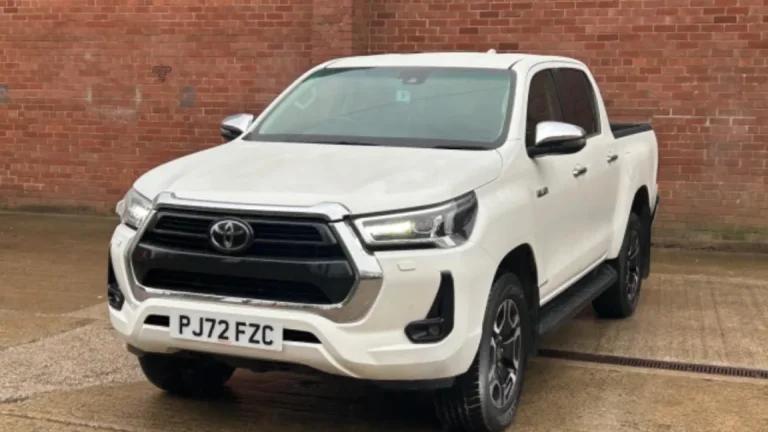Proximity Sensors in Industrial Automation: Enhancing B2B Operational Productivity
In modern industrial settings, the non-contact detection of objects is being done more accurately and faster thanks to proximity sensors. In B2B contexts, especially in the sectors of manufacturing, logistics, and electronics, proximity sensors are pivotal in workflow automation, minimizing downtimes, and providing safety.
In the next sections, we look at the applications and workings of industrial-grade sensors, the proximity sensors’ benefits, and key sourcing considerations for buyers to look for while procuring quality components. Global suppliers like Omchele are also discussed in the context of providing company integration of these sensors into complex automation systems.
What Is a Proximity Sensor?
Proximity sensors are able to detect the presence of an object, referred to as a “target,” and do so without physical contact. These sensors emit electromagnetic fields, beams, and measure the change of signal features as objects come closer to the detection zone.
The following is a list of proximity sensors used in industrial applications:
- Inductive sensors: Utilizes electromagnetic fields to detect metallic objects.
- Capacitive sensors: Both metallic and non-metallic objects are detected through the measurement of capacitance changes.
- Ultrasonic sensors: Sound waves are used to detect objects, making them ideal for transparent and reflective surfaces.
- Photoelectric sensors: Send out light beams and identify alterations in reflection or interruption of the beam.
Each type of sensor has its own uses and is appropriate given the nature of the object to be detected, the surrounding conditions, and the distance to be detected.
In manufacturing, proximity sensors are commonly used in conveyor belts, robotic arms, packaging machinery, machine tools, and in safety interlocks.
Uses of Proximity Sensors in Other B2B Sectors
Proximity sensors are used in countless industries to help improve the efficiency of business processes, facilitating automation. Some key uses are highlighted below.
Automotive Production
In automotive assembly lines, proximity sensors are used for the detection of metal parts, position verification of the parts, and for robotic tools activation during specific timed intervals in the robotic operations. These sensors provide controlled functioning which helps enhance the performance and consistency in quality with fewer manual inspections.
Electronics and Semiconductor Production
In PCB assembly and wafer handling, ceremonial precision and cleanliness mandates stringent measures to prevent dirt or mechanical damage. Proximity sensors help in coordinated movements without contaminating or wearing out mechanical parts.
Food and Beverage Processing
In automated bottling lines and filling, ultrasonic and capacitive sensors are used to ensure interrupted detection and proper filling or sealing. Though more commonly used for metal detectors, inductive sensors can also detect packaging materials.
Logistics and Warehouse Automation
To keep track of pallet movements, manage AMRs, and oversee picking systems, sensors are deployed. Proximity sensors are essential for accurate loading, unloading, and maintaining precise inventory counts.
Heavy Machinery and Mining
Rugged outdoor environments are monitored in real-time with the aid of durable proximity sensors for mechanical components. These sensors assist in collision avoidance, material level measurement, and equipment monitoring across different terrains.
For a broad selection of grade industrial proximity sensors with standard and customized options, Omchele gives tailor-made solutions for B2B industries.
Key Reasons for B2B Companies Adopting Proximity Sensors for Automation
B2B operations usually focus on reliability, operational downtime, return on investment, and cost-saving. These objectives are easily achievable with proximity within the following business needs:
- Non-contact operation: Decreases mechanical friction, wear, and extends the operational life of equipment and sensors.
- Fast and accurate detection: Crucial for industries with high-speed processes and time-sensitive manufacturing workloads.
- Low maintenance: With little physical wear and tear, servicing reduces the need for replacement and repair.
- Compact design: Proximity sensors are designed and optimized for tight spaces in heavy machinery and embedded systems.
- Harsh conditions: Industrial-grade sensors are designed to withstand extreme environments like water, chemicals, dust, and more.
In addition, these sensors facilitate automation with PLCs, SCADA, and IoT systems which are commonplace in large industrial settings.
As an example, Omchele specializes in developing customizable sensor solutions and provides durability, customer service, and OEM services to suit bulk order needs.
How to Select the Suitable Proximity Sensor for Your Business
Thoroughly examining the context and application of a proximity sensor’s use is crucial, especially for large-scale or mission-critical operations. Below are factors that B2B decision makers should evaluate.
Detection Range
How far a sensor can detect a target is critical for effective operations. Range is just like any other metric, and its effectiveness is measured based on balance.
Target Material
Not all sensors are the same, and not all sensors are compatible with every material. Inductive sensors suit metals, while plastics, glass, and liquids make use of capacitive sensors.
Environmental Conditions
As with any other device, factors like temperature and humidity, exposure to chemicals, or dust need to be taken into account. An IP67 or higher rating is ideal for outdoor operations.
Mounting and Size Constraints
Depending on your system design, sensors are available cylindrically, flat, or miniature. Make sure that the proposed sensor is not only compatible with your system from a physical standpoint, but is also compatible in a functional sense.
Output Type
Analog outputs are becoming more common with newer sensors, as are outputs that can support smart factory integration via IO-Link. Choose PNP or NPN outputs based on your control circuitry.
Power Consumption And Lifecycle
In systems that are heavily used, optimally efficient power consumption and system longevity help reduce the total cost of ownership (TCO) over time.
If your specifications are unclear, a trustworthy supplier like Omchele will gladly help with your equipment and application parameters.
Omchele’s Support For B2B Sensor Requirements
In the area of industrial automation, Omchele has built a reputation over the years as a knowledgeable distributor of proximity sensors and other automation parts. The company offers:
- An extensive catalog of proximity sensors which includes inductive, photoelectric, and capacitive sensors.
- Rigorous quality assurance and ISO-certified production.
- Facilities for Tailored OEM/ODM orders.
- International distribution and Customer Support after Sales
- B2B Technical Integration and Consultation
Omchele stands out as an ideal partner for systems integrators and manufacturers looking to add automation while ensuring precision and reliability. They boast over 3,000 different automation components and have extensive engineering expertise, including work as long as since 1986.
In addition, the functionality of a sensor system can have a direct effect on productivity in complex automation systems. Partnering with a specialized B2B vendor, such as Omchele, allows an organization to have confidence in receiving not only quality products, but also reliable long-term technical assistance, as well as future system adjustment capabilities.
In summary, proximity sensors form a foundation in the automation infrastructure of modern B2B industries. These sensors serve any company in automotive production, food processing, logistics, and even electronics by delivering data in the real time alongside granular control to maintain competitiveness in the market.
For more information and expert guidance on Omchele’s sensors tailored to business needs, visit the https://www.omchele.com/es/proximity-sensors/ and browse the extensive catalog featuring proximity sensors designed for industrial applications.







